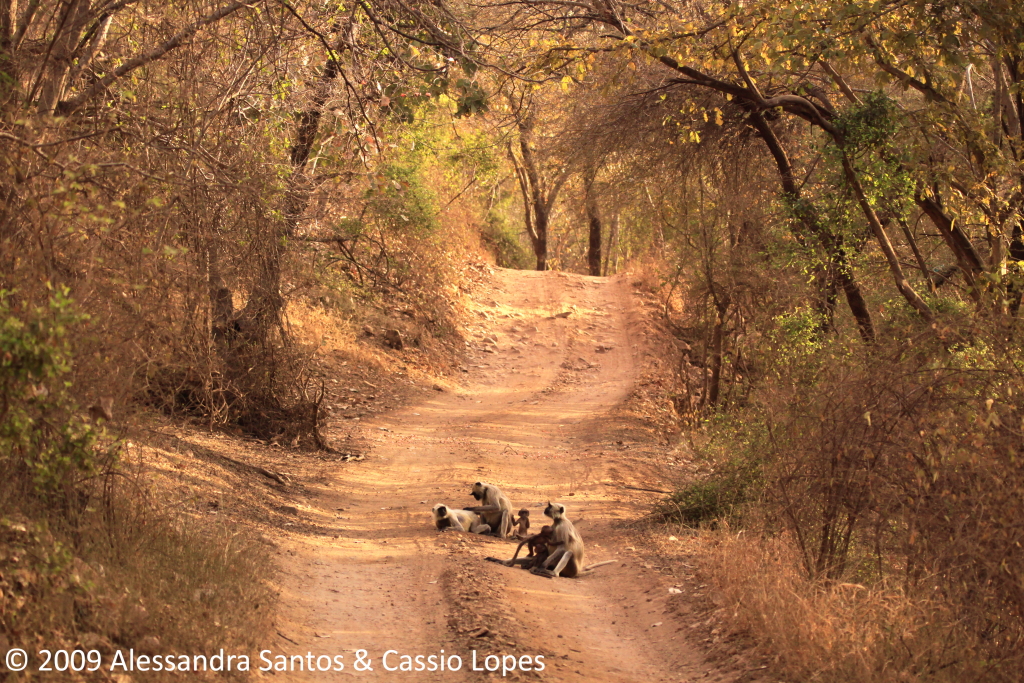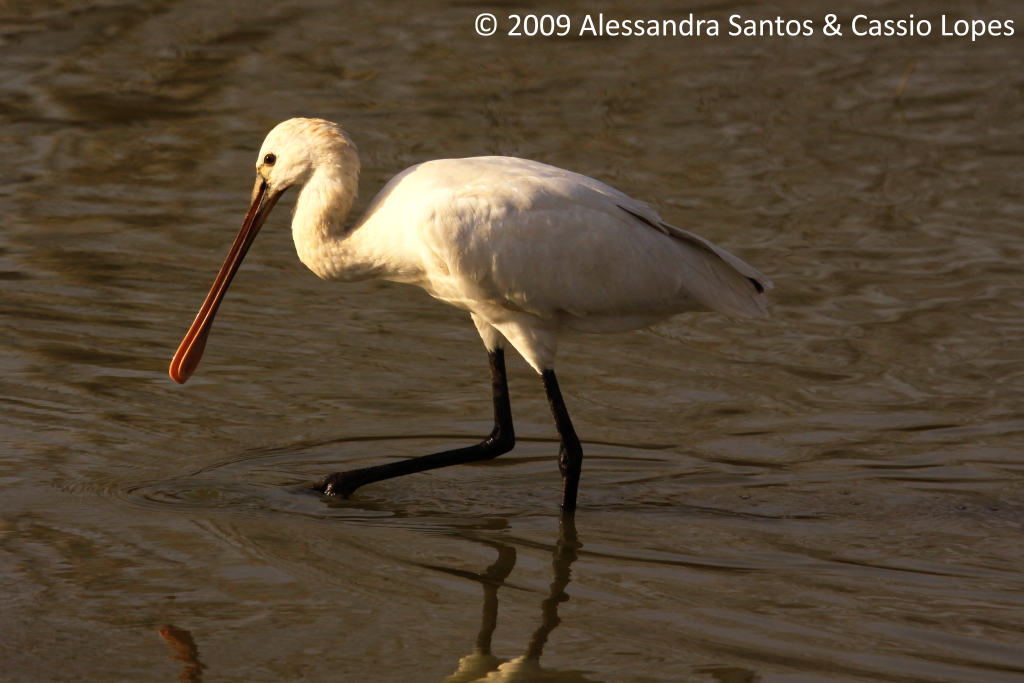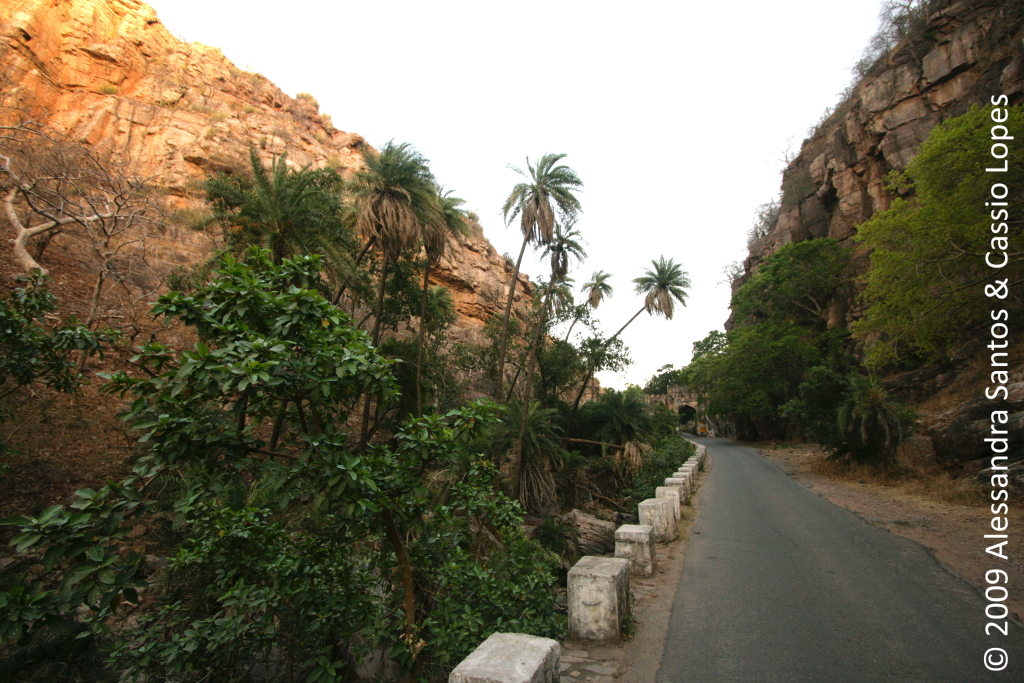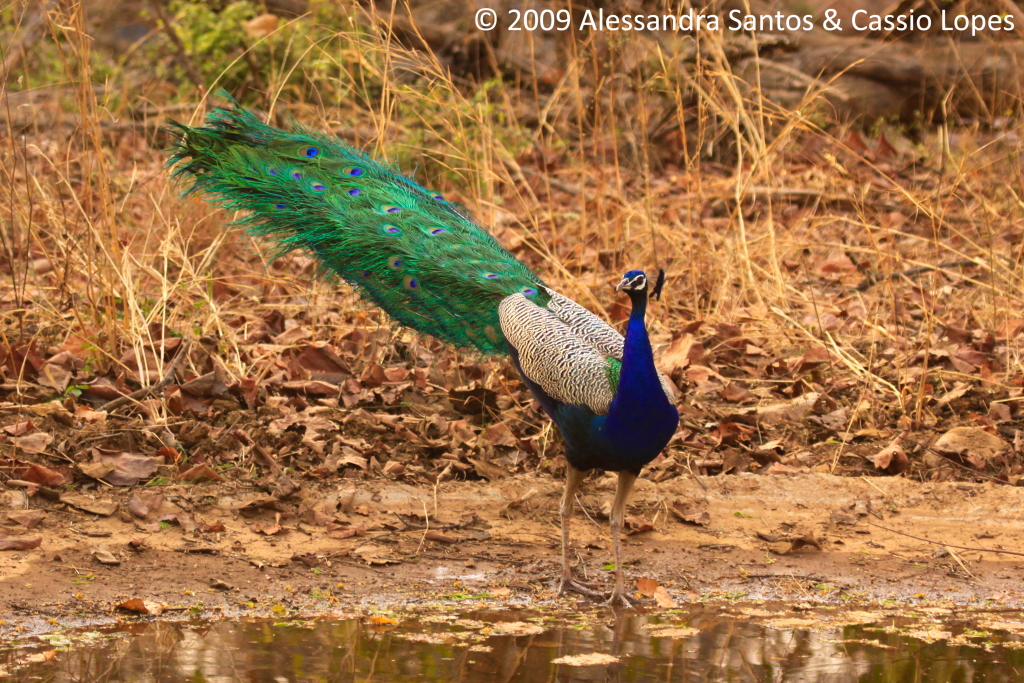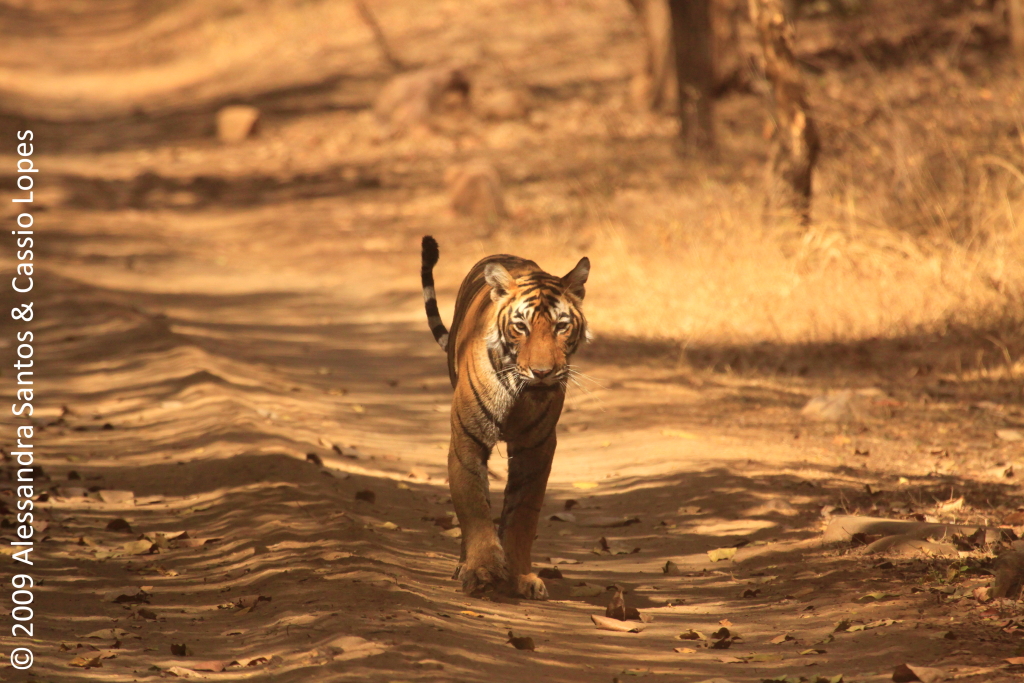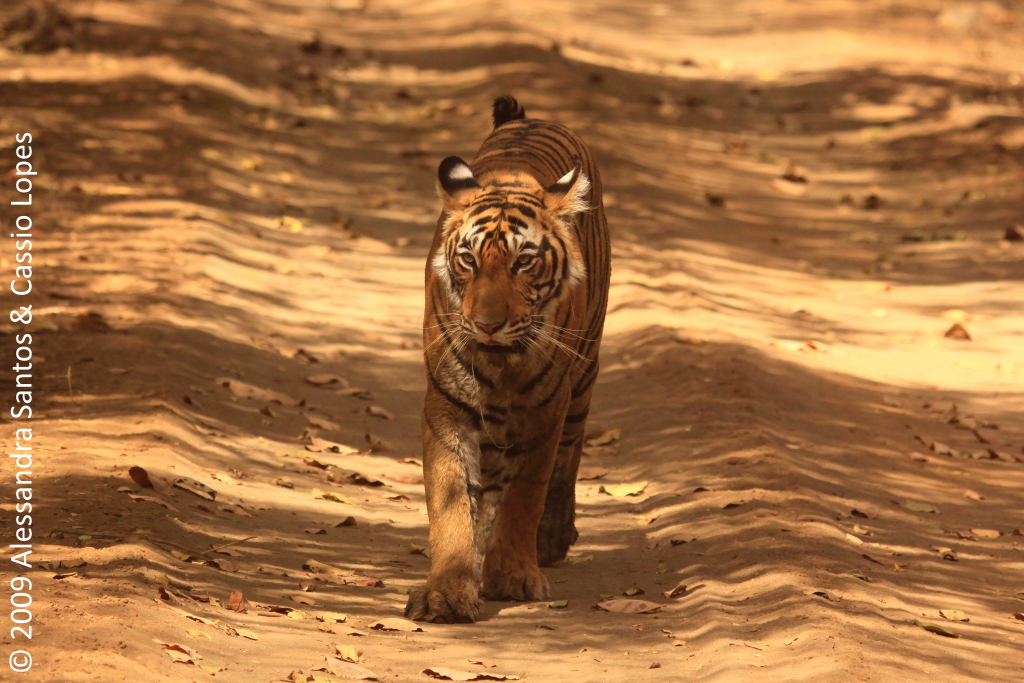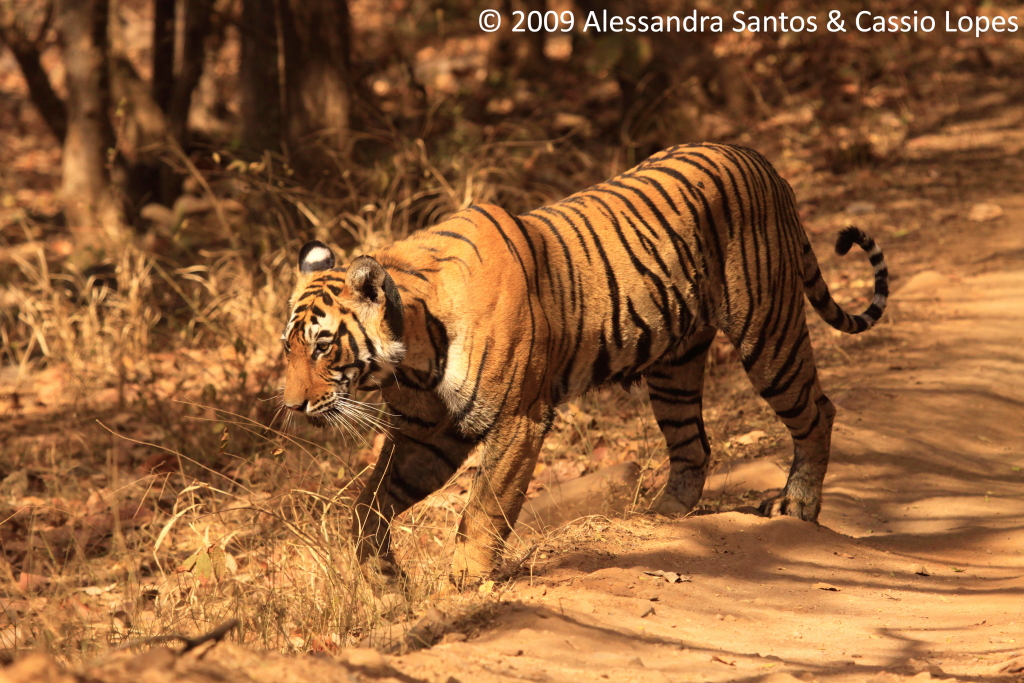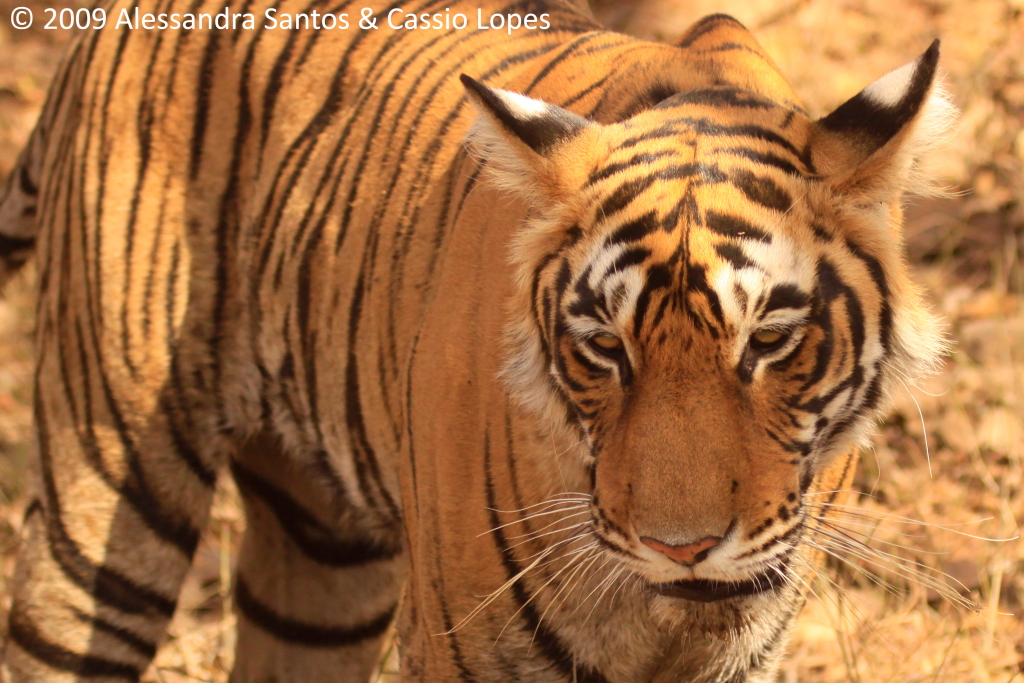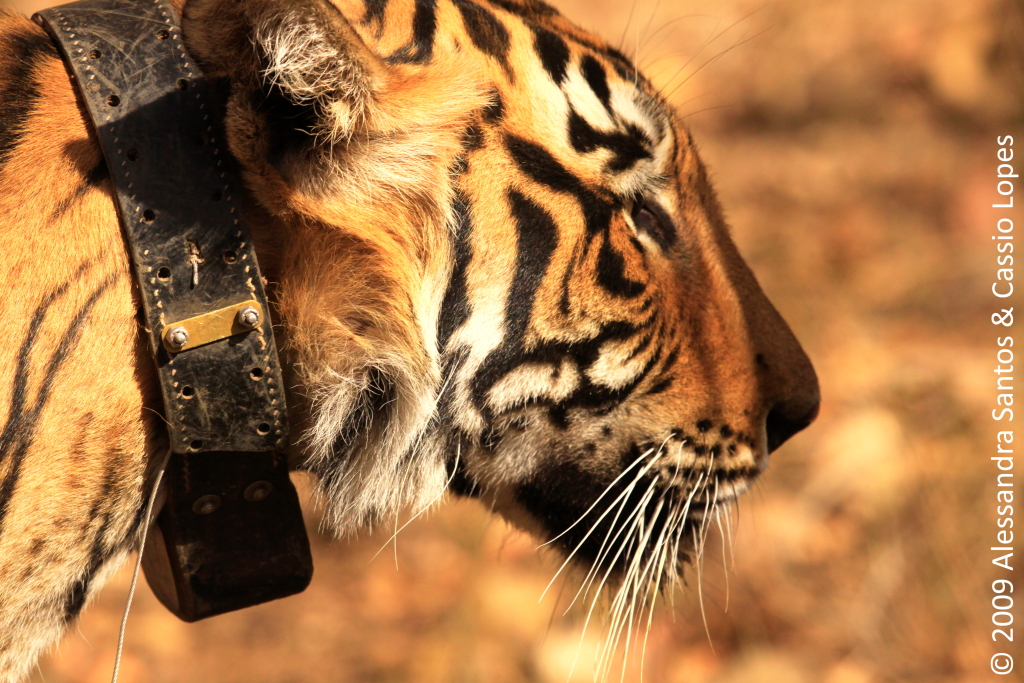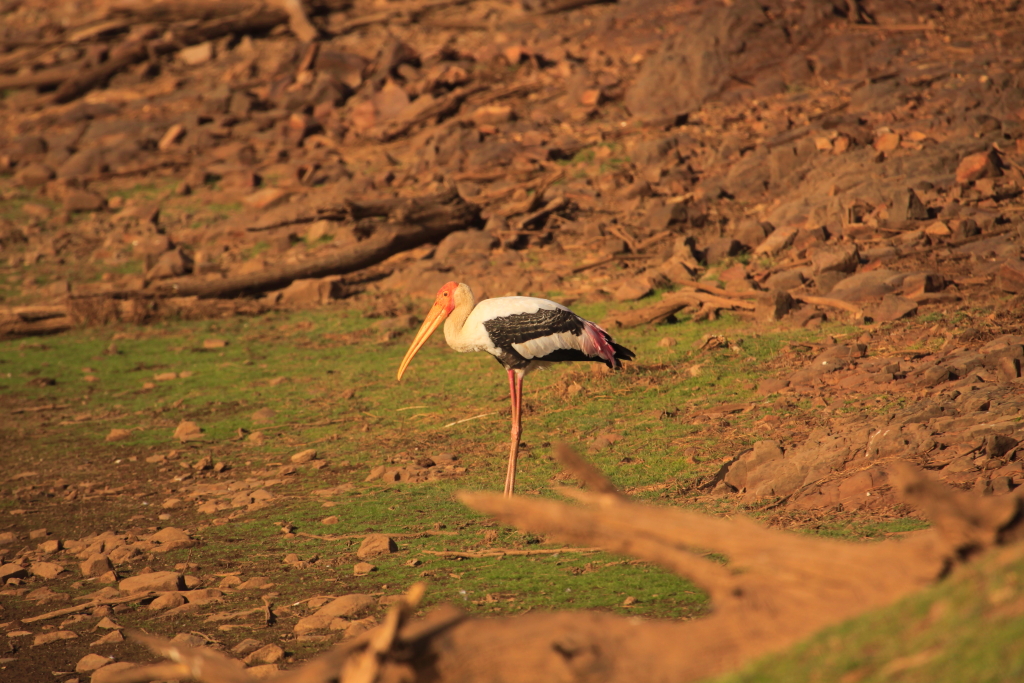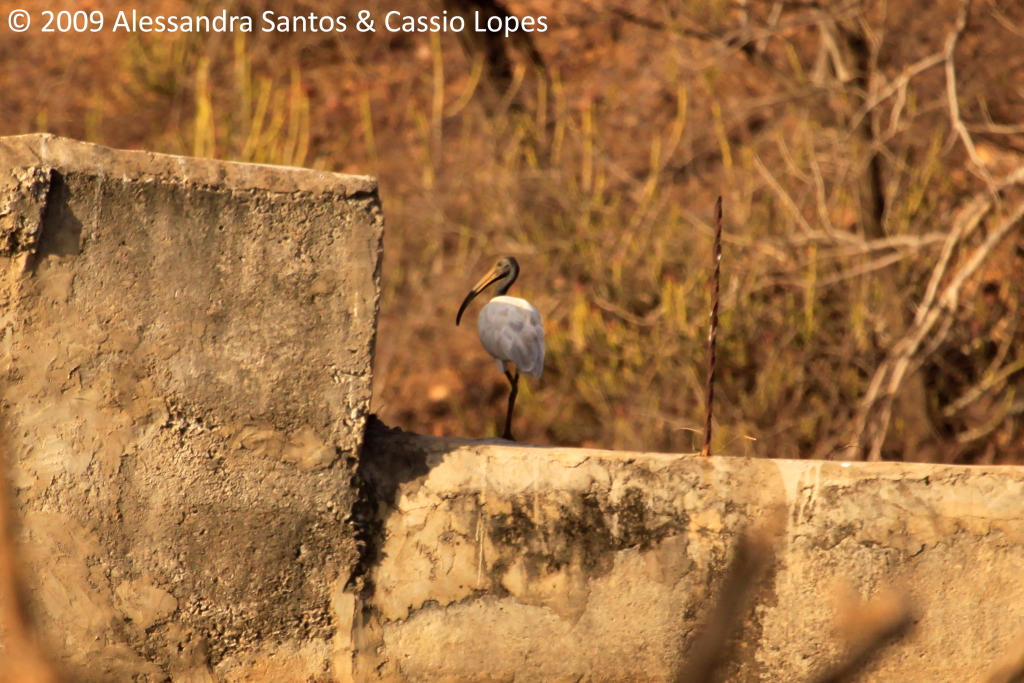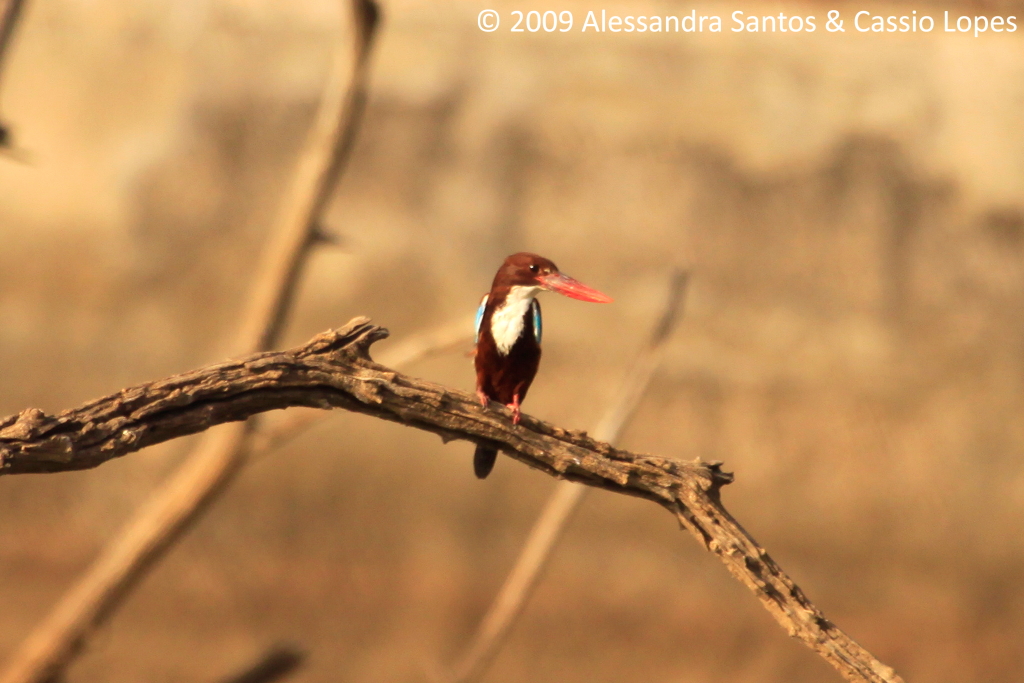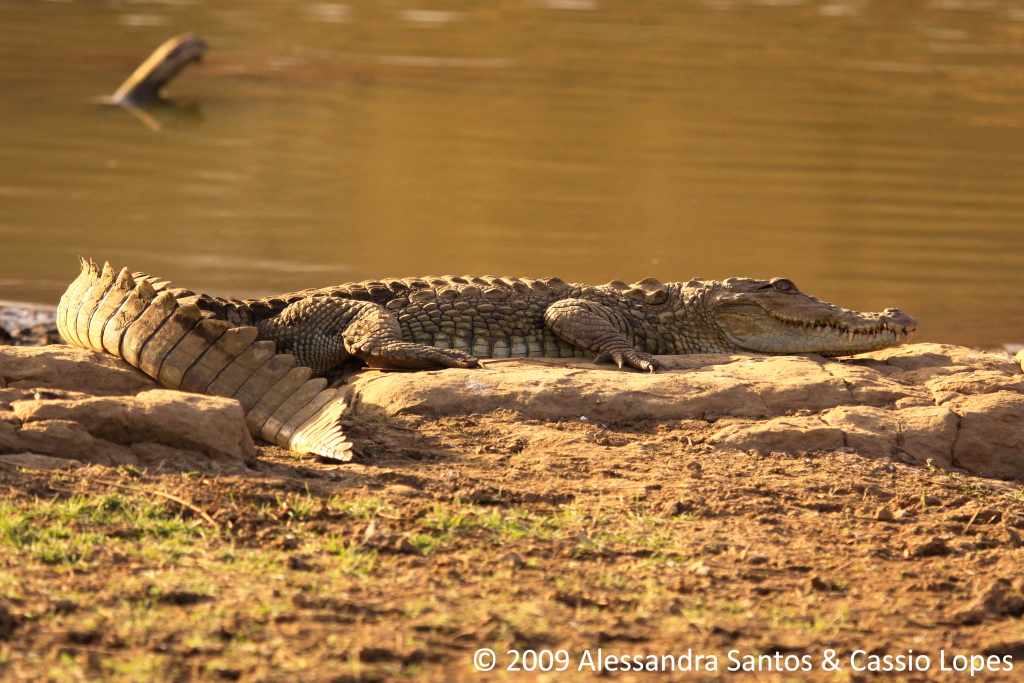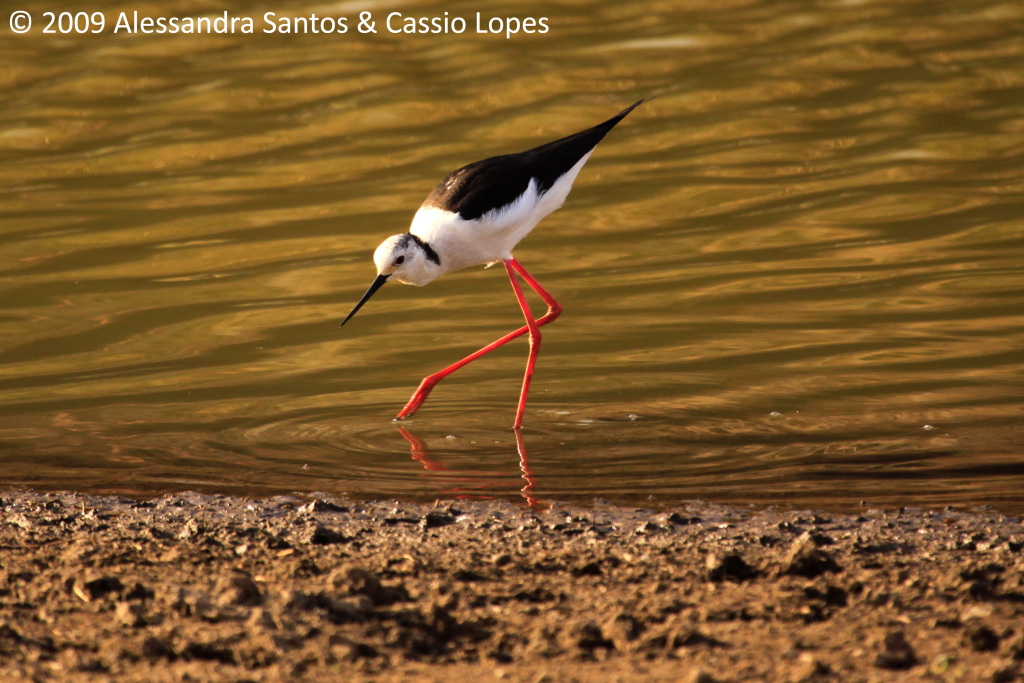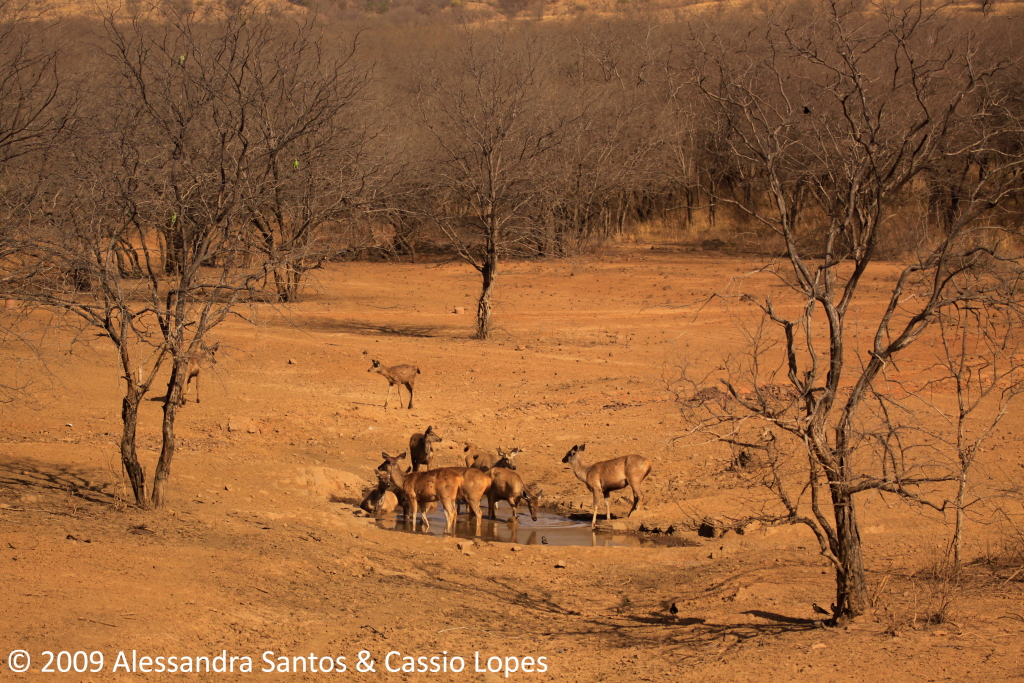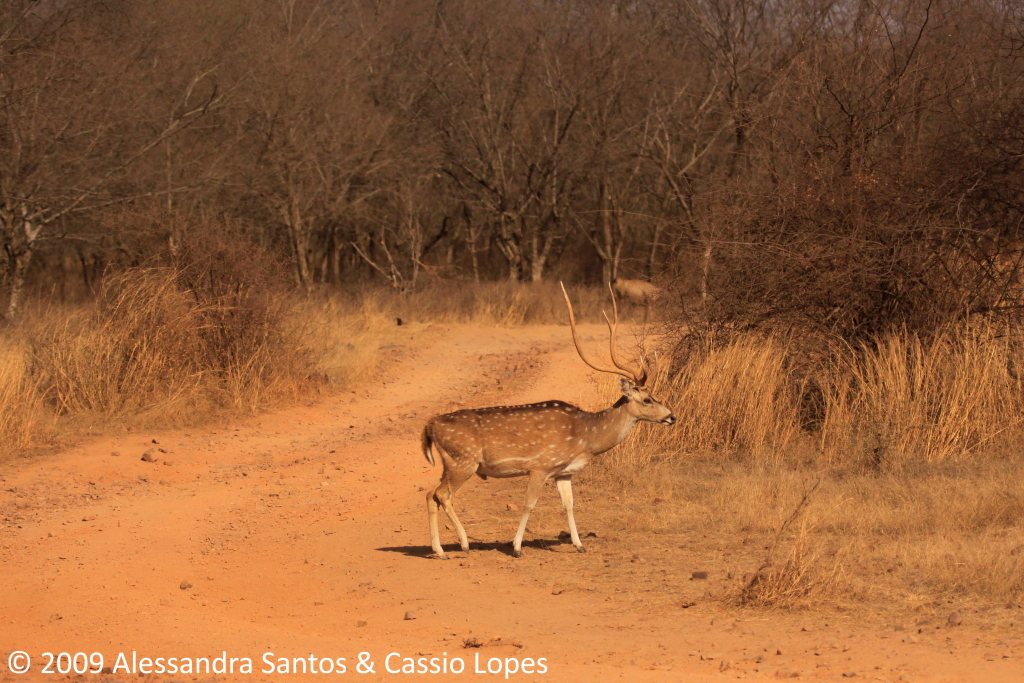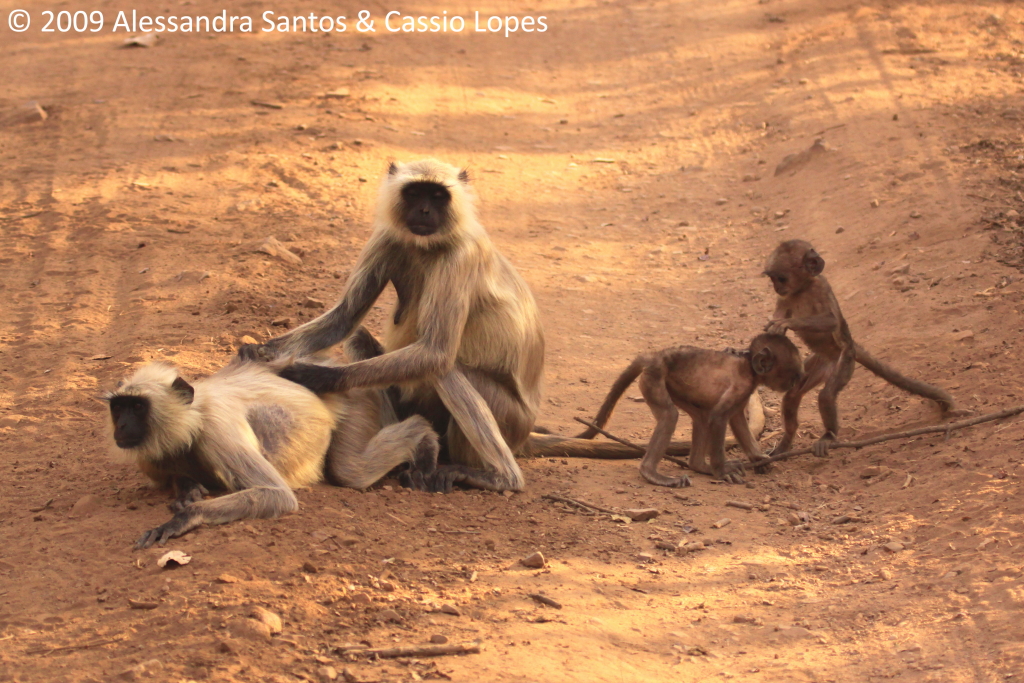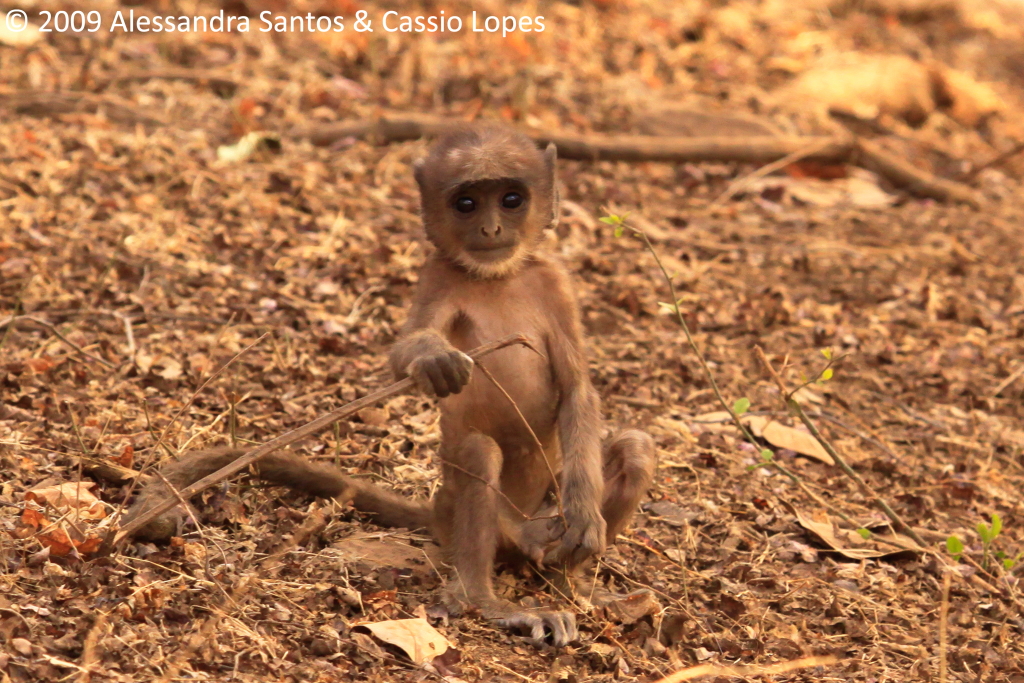As usual, we were picked up first and we went pick the other guests up in another hotel. The first good news was told by Summit – our group had been assigned to Route 3. We vibrated with this news since we had heard before that the Route 3 was the most beautiful one and the one with more chances to see tigers.
Entrance Lake

Rajbagh Lake

The Route 3 is actually the central route of the core touristic area of Ranthambhore where, in the heart of the area there is a lake called Rajbagh (literally the King`s Garden) with a small fortress in the center of an isle where the Mughal kings used to spend the Spring hunting the animals that approached the lake to drink water, including the tigers (not a thing that India can be proud of nowadays…). But despite the dark side of this lamentable heritage, the landscapes of this area of the park are breath-taking, and everywhere we looked there were birds, monkey, deer and hope of seeing a tiger was looking quite promising.
While no real tiger decided to show up, we had to warm-up with the “tiger-bird” (technically known as Rufous-treepie), and other added attractions such like the “snake-bird” (Oriental Darter), and the athletic Stork-billed Kingfisher.
Rufous-treepie

Oriental Darter

Stork-billed Kingfisher

The Route 3 area does not extends far away from the Rajbagh lake, the best way to describe it is to say it looks like a star-shaped set of routes, where the lake is the center of the star and tracks starts from the lake and loops back to it to cover the areas around it. We went onwards and backwards along those tracks visiting and revisiting fresh pug marks which insisted to appear and disappear of the track around the lake, and checking on groups of spotted-deer that looked like suspecting of birds and alarm calls coming from a dense jungle near a more isolated region on the West side of the route. Nobody had seen any tiger so far.
But suddenly, we noticed traces of dust rising on the main track towards East – that was an unmistakable sign that something really interesting was happening there. We rushed to the same direction following the dust cloud when we came across another vehicle that confirmed it was a tiger spotted behind the Rajbagh Lake.
We approached the area and a swarm of jeeps came from everywhere to try guarantee a place in the “arena”. The tiger was still walking around the right border of the road aiming to reach the waterholes in the other side towards the lake in the left.
T.28 Approaching
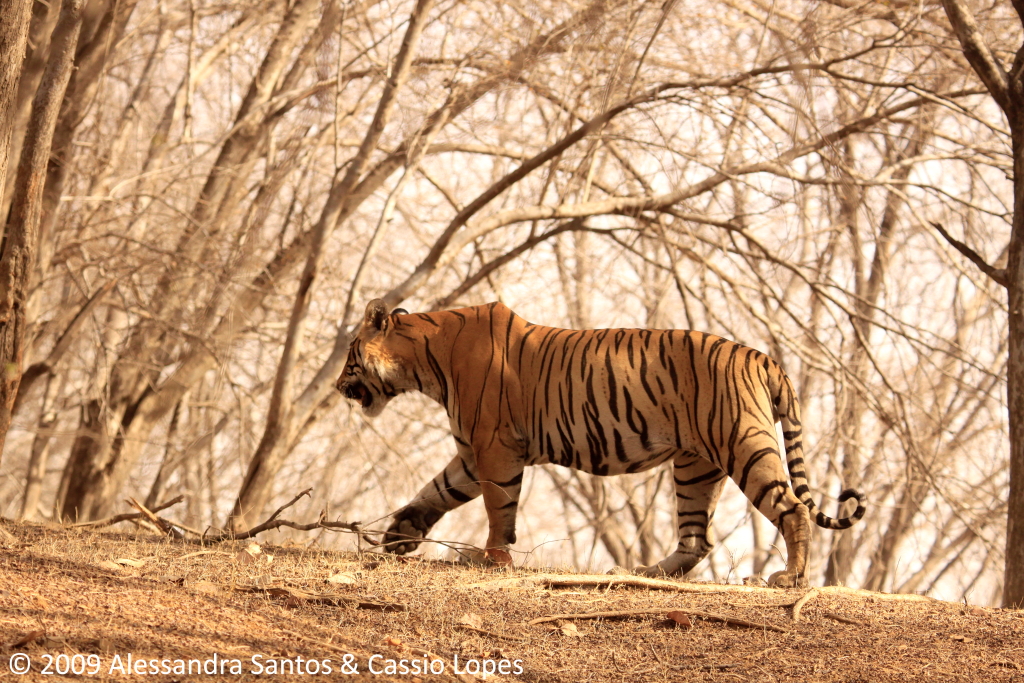
The spotted-deer herd that were drinking at the waterhole backed-off quickly while the stallion watched carefully the movements of the tiger approaching the waterhole releasing loud alarm calls to ensure that the tiger knew that they have already seen him.
Chital on the run

T.28 Close-up

It was a huge male tiger, T.28, not very interested in the spotted-deer, maybe because it was too hot to run. The tiger steadily continued his walk towards the lake without hesitating until he was out of sight. We tried some way to see if he was going to appear in the lake shore, but he never did it, as he probably decided to stop to rest beneath the tree before the lake shore. We had no time to wait his next moves, so we set course to the beginning of the route.
T.28 Crossing the Road

T.28 at the Waterhole

In the way out, near the waterhole we saw again the chital herd that had not yet recovered the peace after the tiger was gone. The youngest ones were still feeling not so safe and crossed the road in a sprint, which we could capture in a panning shot, and not far from we finally saw an Indian Gazelle, quite similar to the Thompson Gazelles of Africa, but not so frequent in the lowlands in India.
Indian Gazelle
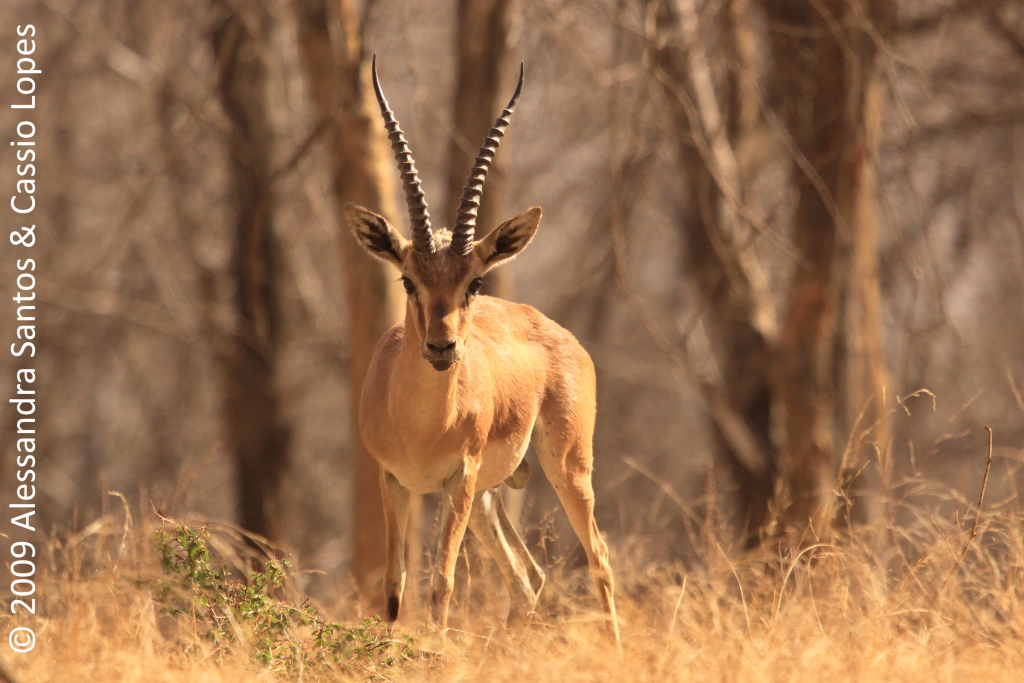
T.28 Leaving the waterhole area
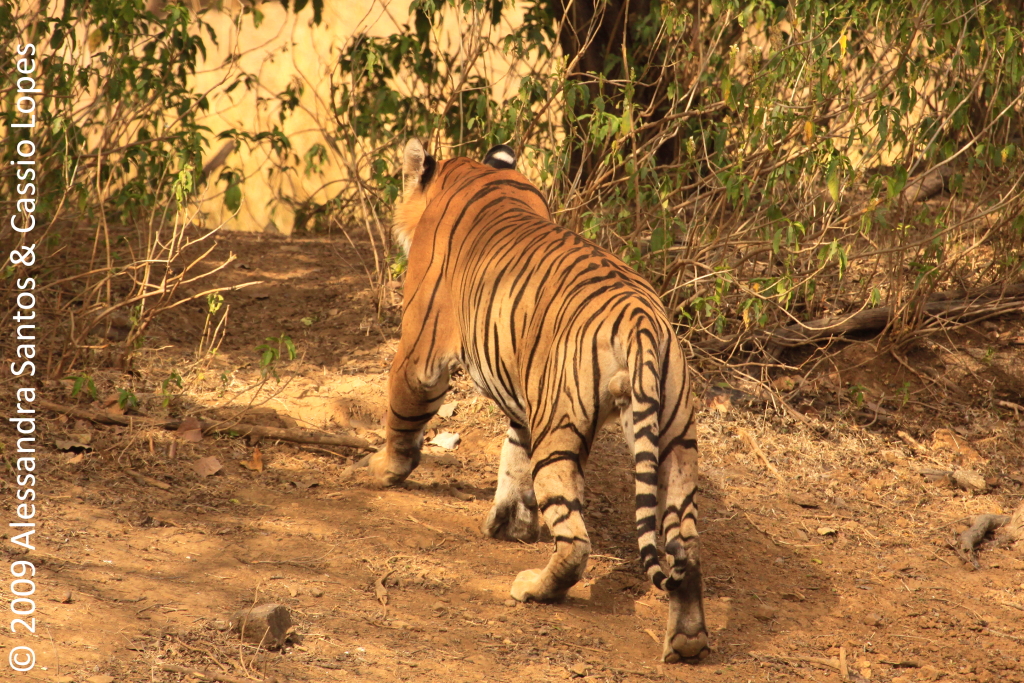
As we got to the end of the morning drive, we could take really nice shots of Nilgai (or Blue Bull Deer) in open fields in the beginning of the route. That was really a high quality game-drive that made us recover the thrilling sensation of the previous lucky game-drives we had before.
Nilgai Close-up

Again stopped in the rangers’ check-point the langur troops were making their usual “show” and, of course funny and odd poses.
Langurs grooming each other

Full Examination

In the second half of the day, the game-drive would be led by Ravindar, the same guide we had in our 1st safari at Ranthambhore. If spotting tiger would depend on the guide’s luck, then we were optimistic about that drive. Completing the whole set of routes of Ranthambhore we have been assigned to Route 1, the only one missing.
The extreme dry and dusty lanes looked like never-ending tracks leading us to the center of the earth because there was no wildlife and temperature was getting hotter and hotter as we advanced into the jungle. This route was even drier than Route 2.
Dusty Winding Roads of Route 1
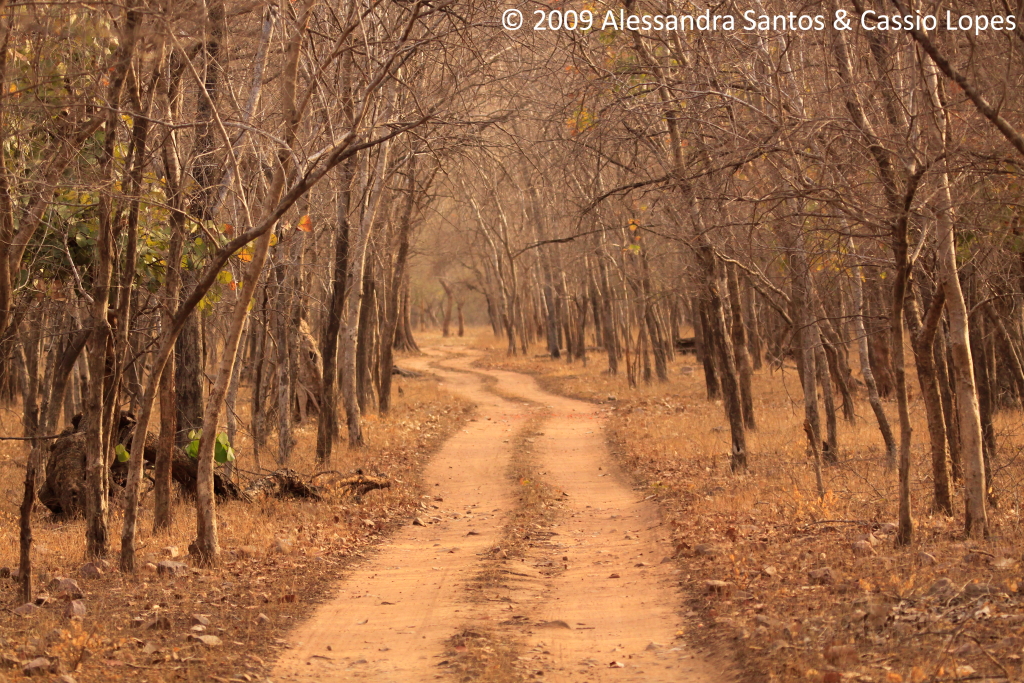
That route was particularly empty of wildlife. We spent hours following a straight line of dry bushes and trees, without seeing anything worthy of reporting – the route was very long with no derivations or alternative tracks to break the monotony. There was absolutely no trace of tigers in that area, and despite our initial optimism had already faded after so much time of poor game, hope always lasted till the end of the safari drive.
We made a quick stop to take some pictures of a young Nilgai eating the leaves from a tree branch, it was an unusual sighting and the light was excellent as the Nilgai was near the road and we had no obstructions to view it.
Nilgai grazing from the trees
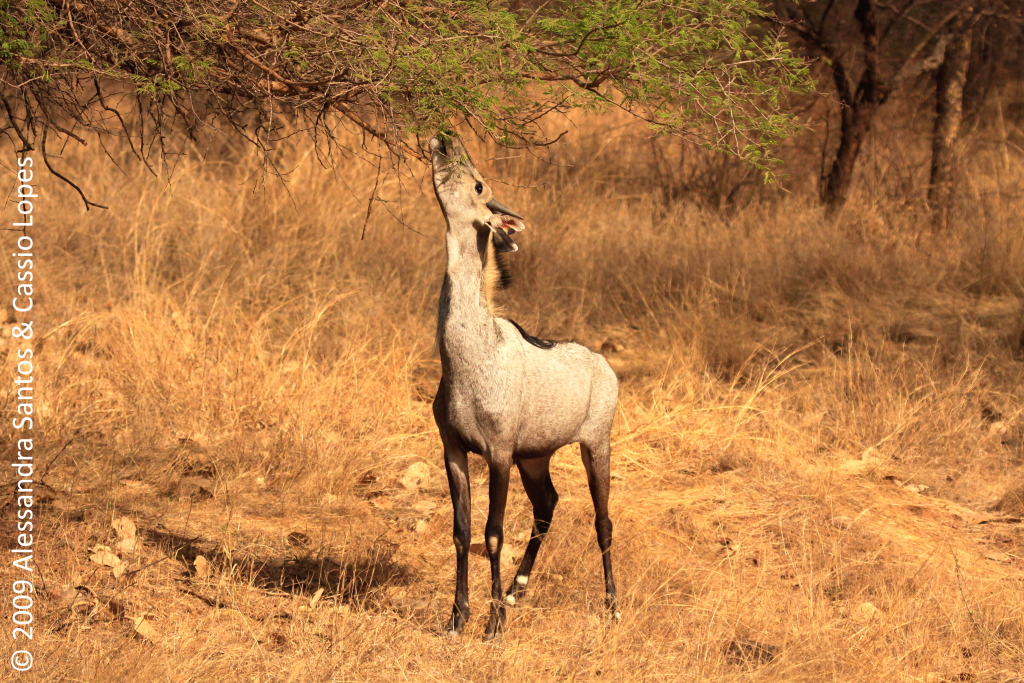
And not far from there we cried to Ravindar: Stop, stop! What is that thing walking on the forest? – the vision was not clear; the animal or whatever we saw was 150 meter away and there were many branches and tree trunks in the way. “Looks like there is more than one animal moving and they are big, what are they?” – We asked. Ravindar asks the driver to go back to find a better point of view. In a matter of seconds the revelation comes up: “Sloth Bear, yes, sloth bear! And it is a female with cubs…Incredible!” – Ravindar reveals astonished. We were indeed astonished to see a family of sloth bears that hour of the day; they have a thick black fur coat and it was incredibly hot at that part of the park.
Sloth Bear family

Sloth Bear young cubs and mother

The mother bear was eating fruits dropped on the ground while the 2 cubs played around her, and sometimes scaling her back. They were really beautiful – for sure a fantastic sighting. We spent there almost half an hour betting on the chance of the family approach the road, but they were afraid of the jeeps, then they kept a safe distance, sometimes disappearing completely behind the rocks and tree trunks.
Back to the hotel Mr. Singh was very interested in seeing our sloth bear pictures – there was already 6 months since somebody spotted a sloth bear in Ranthambhore. They are not very common in the core area as they prefer the safety of the non-touristic area and even less common to see them during the day at the summer season. Amazing.
We were pretty sure that we would leave India without seeing the Sloth Bear as we had more chances to see it back in Bandhavgarh. We were happy we were completely wrong…
Note: you can click on the picture to take you to the original size picture in our Flickr album page, being better to see the photographs you like. Or if you may want to go straight to our Flickr page, please access the link Our Flickr Page
